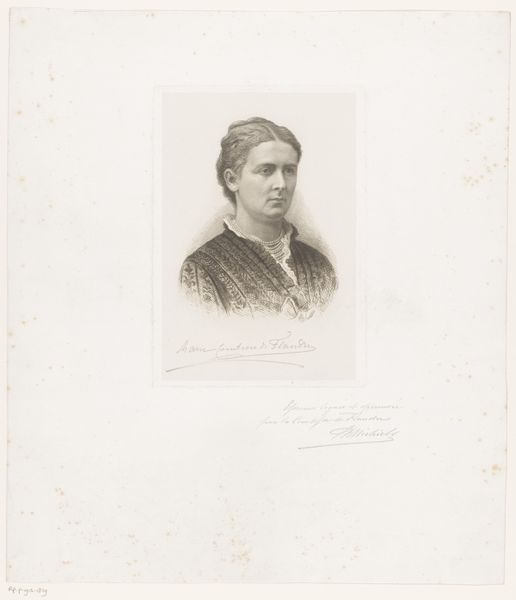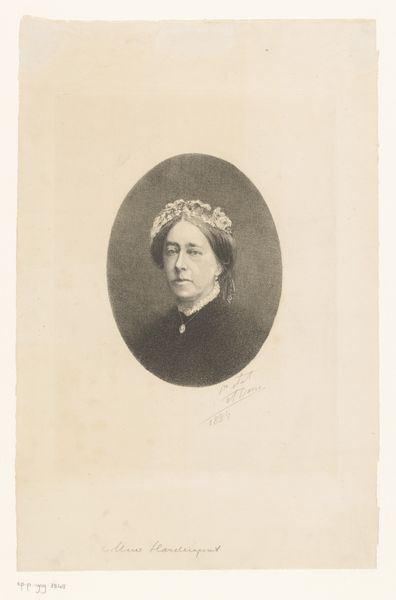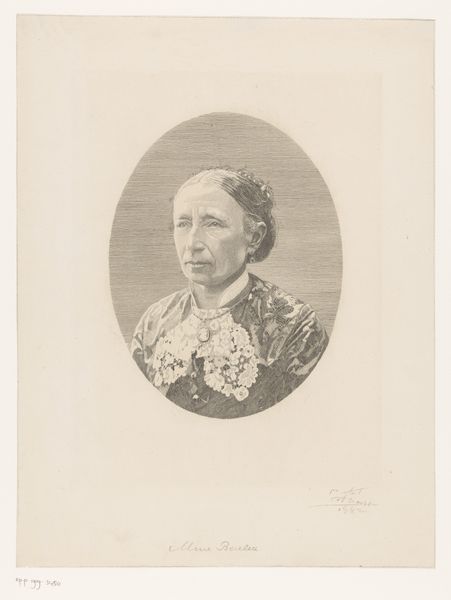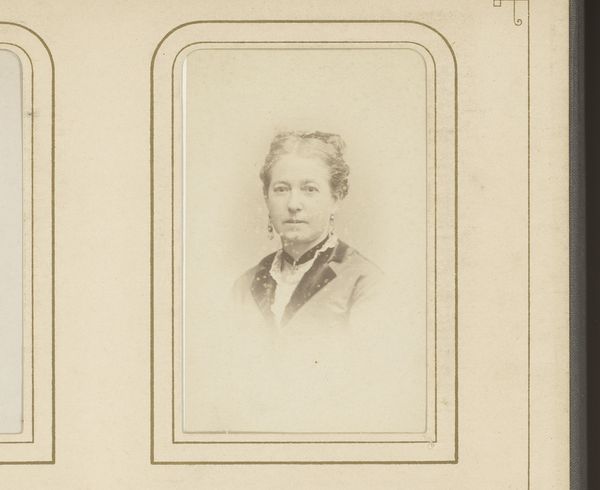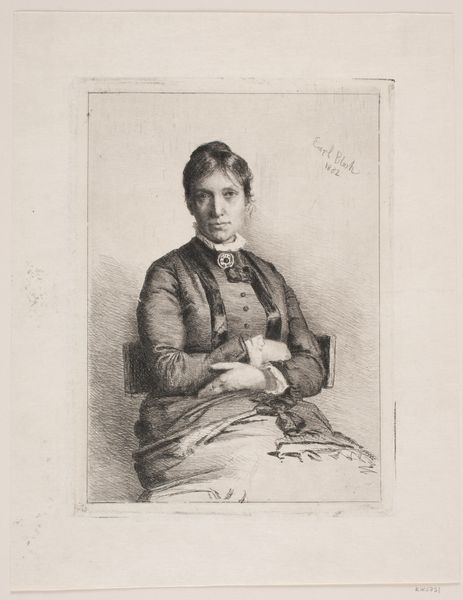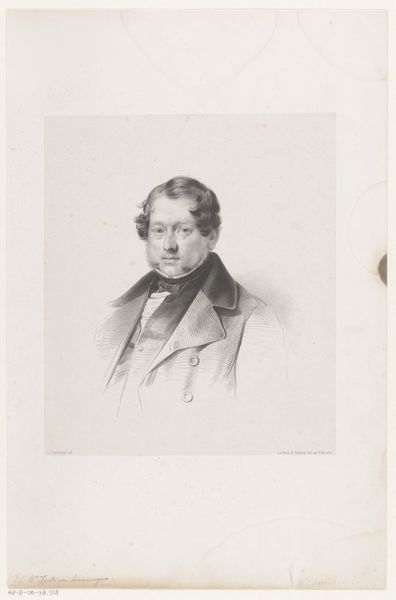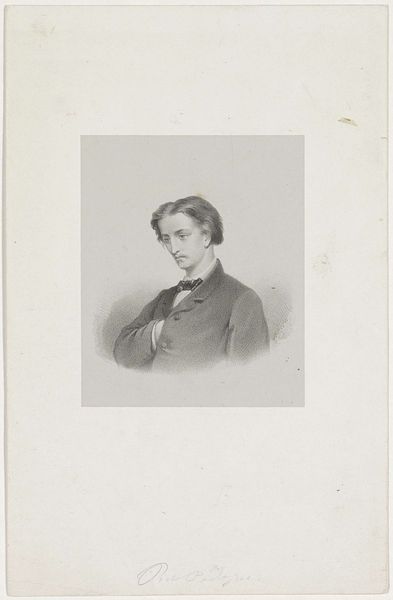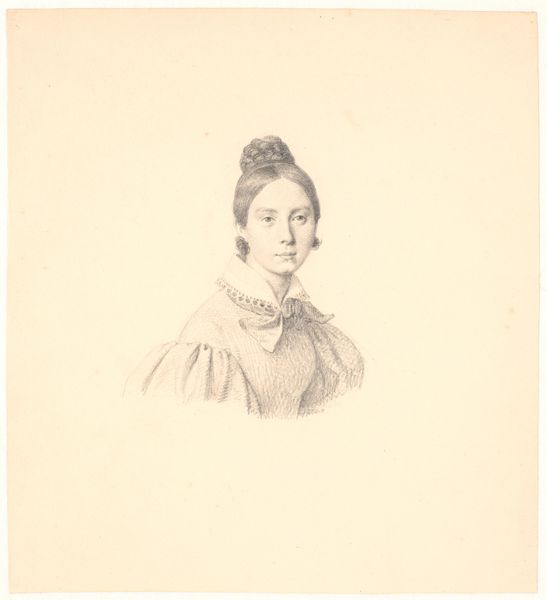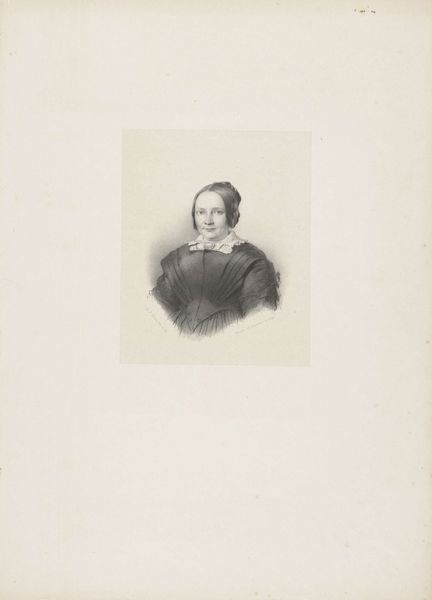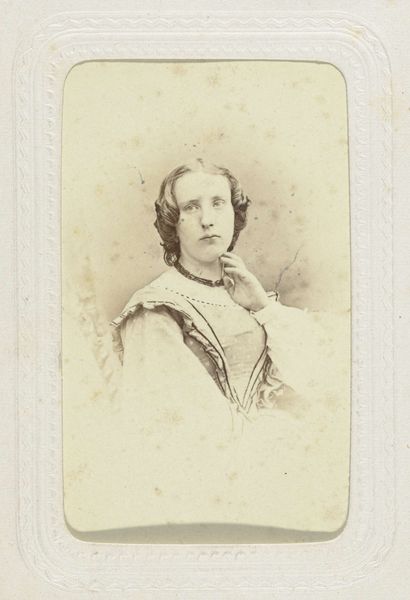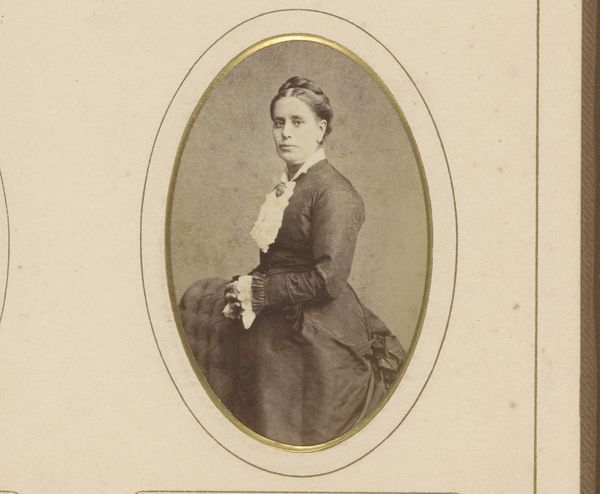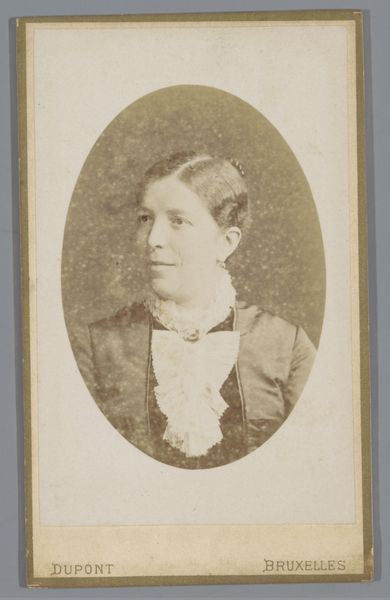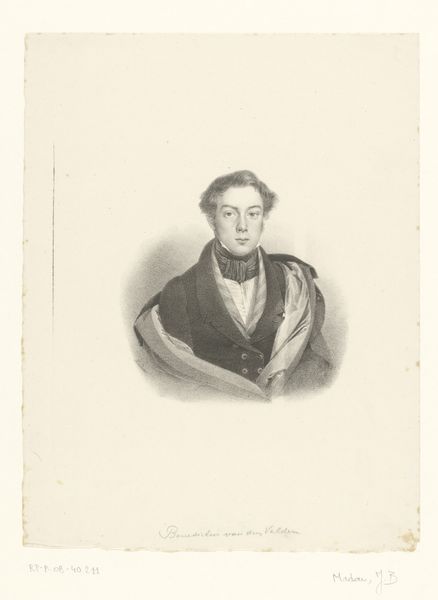
drawing, paper, pencil
#
portrait
#
drawing
#
paper
#
pencil
#
academic-art
#
realism
Dimensions: height 516 mm, width 367 mm
Copyright: Rijks Museum: Open Domain
Editor: This is "Portret van mevrouw Bodart," or Portrait of Mrs. Bodart, drawn in 1874 by Joseph Schubert. It's a pencil drawing on paper, and it feels very proper, very… reserved. What strikes you when you look at it? Curator: The averted gaze, subtly downcast. Consider the iconography of portraits from this period; direct eye contact signified status, power, a certain social dominance. What then, does this slight withdrawal communicate? Perhaps a carefully cultivated image of modesty? Editor: So you think she’s intentionally projecting an image? It just looks like a regular portrait to me, very typical for the time. Curator: The ruffle details and buttons, precise hair; these weren’t chosen arbitrarily. The artist and subject both likely understood the silent language of attire. Schubert isn’t merely representing; he's encoding. How do the details echo broader cultural ideas about femininity and virtue? Editor: Oh, I see what you mean. Like, is the ruffled dress code, like, “pretty, but not too flashy”? It’s definitely giving demure vibes, for sure. Curator: Precisely. The cultural memory embedded in something like ruffled adornment is fascinating, no? A symbol designed to convey… respectability? Can that visual vocabulary be reimagined? Editor: It's like a visual script that we almost need a key to read sometimes. I never would have thought of that! Curator: Each line and shadow contributes to the narrative. Every choice tells a story. What are the stories told about women in this century? And who gets to tell them? Editor: Food for thought. I guess these “simple portraits” can speak volumes if you know what you’re looking for. Thanks for pointing that out!
Comments
No comments
Be the first to comment and join the conversation on the ultimate creative platform.
